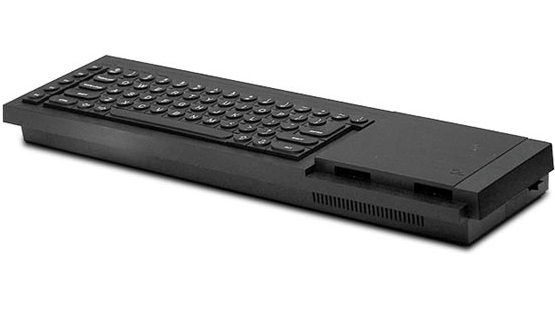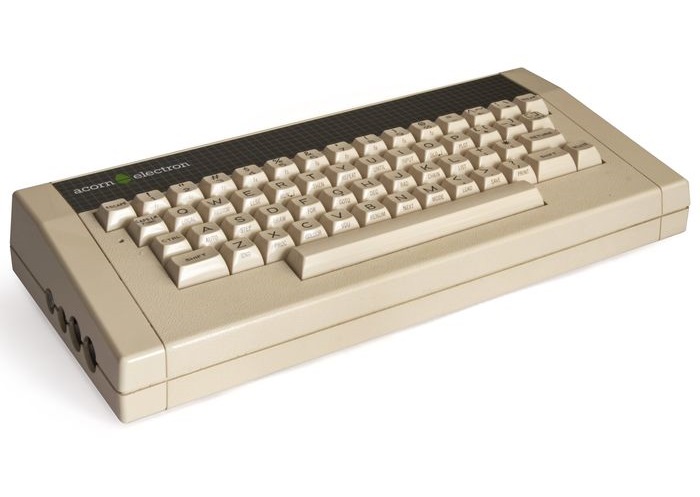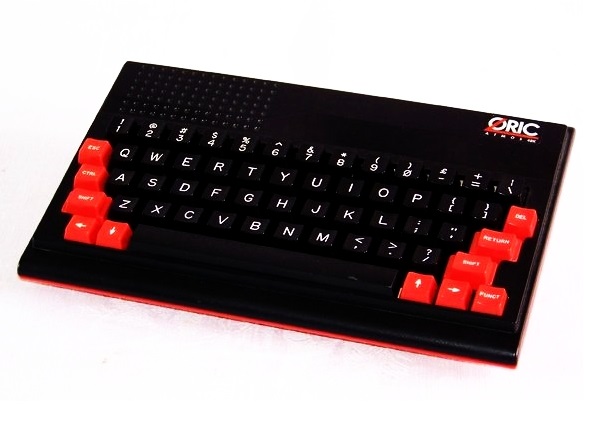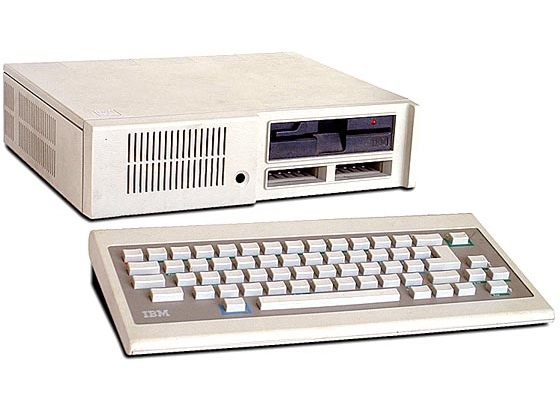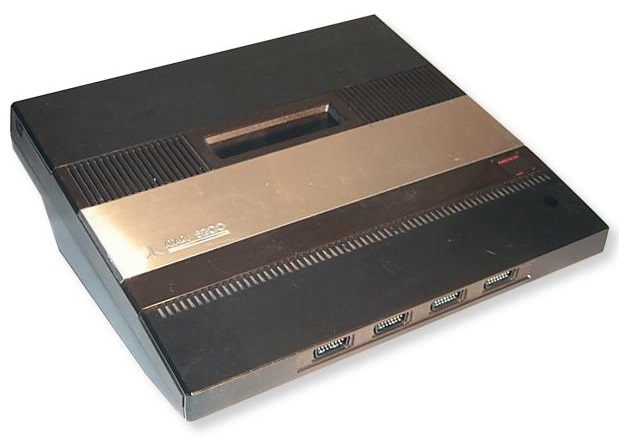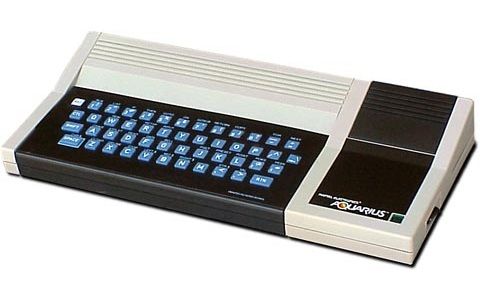
Micro Mart
 17th March 2011
17th March 2011
Categories: Retro Gaming
Author: Ian Marks
Published in Micro Mart #1149
Computer White Elephants
In the world of retro computers, there are always going to be computers that everyone remembers fondly. You know the sort of machine... the ZX Spectrum, the Commodore Amiga, the Apple Mac; these computers will always be thought of as innovators, and as computers that did something towards changing the computer world.
On the flip side though, there are the computers that have far fewer people remembering them. They don't have many fans, and even fewer people willing to say a good word about them. In my opinion they fall into three categories: the good, the bad and the ugly.
With these three western-themed titles, you can, I think explain the failure of the machines in question. Let's begin by looking at the good machines.
The Good
The first type of white elephant computer is the good sort. Why, you ask, would these computers have failed if they're so good? Well, the answers are often bad marketing, or mistiming. Whatever the reason, the following computers never set the world alight, even though some of them probably deserved to.
1. The Sinclair QL
I'm starting with some computers everyone has heard of but few people have used. The QL is an excellent example of this. On release it was a marvel, with true multi-tasking a feature (one of the first home computers to have this), and featuring a cut-down 68000 Motorola processor - the 68008 - later to be used on early Macs, Amigas and STs. For 1984, it was a mighty powerful machine for a fairly small price. So what went wrong?
The answer is mainly Sinclair Research's incompetence, with the company unable to fulfil orders, some people waiting months. Reliability problems and sticky-out dongle add-ons meant that those that did get a QL were often dissatisfied. Also, Sir Clive made a mistake on the hardware front, with his unpopular microdrives used for storage, and a cheap Spectrum+ type keyboard, it failed to attract serious business users.
A shame really, because if he had put a bit more effort in, he could have had a monster hit on his hands, and the world of home computers could be very different today.
2. Acorn Electron
Upper middle class parents loved the BBC Micro. It gave them (and their children) a sense of superiority, and made them thing that their kids were learning on their computer at home - when actually they were probably just playing Elite.
Acorn decided to release a cut-down version of the BBC B to the market in 1983, so that lower middle class parents could feel a bit smug too. To be fair, it was a reduced version of the BBC, but it was still a fairly powerful machine in its own right, and it had the all-important (from an educational point of view) BBC Basic.
Sadly, mistakes over production meant that the Electron failed to be ready in time for the important Christmas period, and its sales never really picked up when it was released. In the end, it did sell a fair number of units, but it was never a stellar effort, and most people regard it as a flop.
3. Dragon 64
Take away the awful screen colour scheme (black on green or orange on white?) and the Dragon 64 was a great machine. A bit of a clone of the Tandy TRS-80, it featured a superb keyboard, good peripherals and some superb games. I remember playing a game called Donkey King on my friend's machine and, apart from the green background, it was arcade perfect.
Sadly for the Dragon 64, it was released a little bit after its younger sibling, the Dragon 32, in 1984. The Dragon 32 had not been a major success, and the company was already in a bit of trouble. While the Dragon 64 was a good machine, it failed to get a foothold in a market that was dominated by the ZX Spectrum and Commodore 64.
4. Oric Atmos
If you say Oric to people of a certain age, they remember a blue and white computer with hard keys that you could make silly noises on in WHSmith's. There was a follow up computer, though, the Oric Atmos in 1984.
The Atmos had a proper keyboard, and slightly improved Basic. To all intents and purposes, it was a great little computer, at a fair price. Similar to the Dragon 64 though, it just couldn't get into the Sinclair and Commodore dominated marketplace, and it slipped away into the night. Apparently though, it was very big in France, so it cannot be deemed a flop. Just a UK flop.
The Bad
Okay, so we've had the machines that probably should have been successful, but factors that were not their fault got in the way. Now we're going to look at those machines that deserved everything they got. The sort of machines that were downright wrong.
1. The Apple III
Today, everything Apple touches seems to turn to gold, but it was not always that way. In 1980, it released a computer called the Apple III, a follow-up to the hugely successful Apple II. It flopped spectacularly, and sold in very small numbers. The reasons why are numerous. Firstly, it was expensive, secondly, nobody really at the time wanted a successor to the Apple II, most being quite happy with the expensive computer they already had; and thirdly, it wasn't very good.
There were quite a few faults on launch, including overheating problems, and the much heralded Apple II compatibility was not quite as compatible as Apple had led people to believe. Apple soon quietly dropped the Apple III, and began work on different machines.
2. IBM PCjr
Nowadays IBM is pretty much a forgotten force in the PC world, but in 193 it was a god. Surely a company as big as IBM wouldn't release a high-profile, ill-conceived, flop. Well, funnily enough it did. The IBM PCjr.
Designed as a home version of the business PC, the PCjr was competing in the US with the Commodore 64 and Atari home computers.
Sadly, though, it was hideously over-priced, with disk drive models costing around $1,200, nearly three times the price of similarly specced Commodore. At the time, you could buy a clone of a proper IBM PC for less money. The buying public voted with their feet.
On top of this, the calculator-style keyboard was dreadful, and the machine had almost no standard expansion slots. Worst of all was the fact that, although it used the PC name, it was not overly compatible with its bigger brother unless a great deal of money was spent on expansion.
3. Sinclair PC200
The first thing to mention about this computer is that it isn't by Sir Clive at all, but rather by his evil successor Alan "You're Fired" Sugar. If one of The Apprentice candidates had come up with the idea of putting a fairly poor PC into a Sinclair-branded cheap case, they'd be having a finger pointed at them by Lord Al as we speak.
The Sinclair PC was a terrible idea, it looked like a budget Amiga, and in 1988 was a computer that nobody wanted or needed. The worst feature among many was the fact that it only had CGA graphics, when every other PC clone on the market had at least EGA, if not VGA. Add to that the fact that because of the size of the case you could not plug in expansion cards, and you can see the problem.
Poorly thought out, and a disservice to the great name of Sinclair, the PC 200 lasted about three months.
4. Apple Newton
The Apple Newton was a good idea, but it was released far too early (1993), before technology had a chance to keep up with all its features. Featuring a touch screen, text recognition as well as the ability to sync documents and contacts, it sounded like a fantastic idea.
Unfortunately, it wasn't. The screen quality was poor, and in some light conditions, almost impossible to read. Coupled to this, the touch-screen wasn't particularly sensitive, and often failed to respond to the stylus input.
Most damning though was the fact that the handwriting recognition was dreadful (often mocked in the Doonsbury cartoon strip) and regularly failed to recognise anything. On a system where this was its major feature, it was a crippling injury. The Newton did improve with subsequent models, but it never really sold well. Not until the iPhone did all the promise and technology of the Newton become a market winner.
The Ugly
The last category of white elephant computers are those ones that were maybe good, maybe bad, but nobody really noticed - because they were downright ugly. They were scuppered by the fact that nobody wanted to be seen dead with them on their desk.
1. Commodore Pet 200
People do remember the Commodore PET fondly. The combined monitor, keyboard combination in an angular box is etched in people's minds. In 1979, Commodore decided to update its design, and came up with the 200.
It looks like a Commodore PET that has been over-inflated, all those angles are now bursting curves. It is literally a mad design, and one that wouldn't look out of place in a low-budget, cheesy 70's sci-fi film. Sadly, Commodore's main marketplace was businesses, and it wanted more serious-looking computers.
It didn't sell well, and wasn't around long.
2. Atari 5200
The 5200 was Atari's successor to the 2600 VCS console. The 2600 had sold millions, how could it possibly fail? Well, why not make it the size of a small coffeee table; surely that's what the people want?
Well, sadly in 1982 it turned out it wasn't what the people wanted, and it sold so poorly that it wasn't even released outside of America. Of course, the software games crash of the early 80's may have had a little bit to do with it, but really if you've ever seen an Atari 5200 in the flesh you'll understand what was wrong; the thing was bigger than most televisions!
What's worst is that, if you open the case, most of the innards are pure air; Atari actually designed it that way for aesthetic reasons not technological necessity. Bonkers.
3. Commodore 16
This machine is an odd one, and even Commodore found it hard to market. In the early 80's, the buying public wanted cheaper machines, and Commodore gave them the C16. Sadly, the C16 was a very heavily cut-down computer. Far less powerful than the Commodore 64, and with very little software available for it.
If that wasn't bad enough, it was just plain ugly. It looked like the Commodore 64 (not the greatest looker of the 8-bit world) in negative. Even huge price cuts couldn't save the C16, and it was dropped from the Commodore line-up, almost as soon as it had appeared. It is little remembered today, being a true computer white elephant.
4. Mattel Aquarius
In 1983 Mattel was still counting the dollars it made from the Intellivision. What it needed now was to release a home computer to repeat that success. What it didn't need was to release an underpowered micro that looked like an Oric 1 that'd been stamped on.
Having a strange curved design, the Aquarius was aesthetically challenged from the start. Further problems were caused by a garish blue, black and white colour scheme, and a keyboard that looked like a rejected calculator keyboard.
Nobody bought it, very few people remember it, and you'd do well to find one on eBay because they're as rare as hen's teeth.
Gone And Forgotten
One of the joys of collecting old retro computers is the ones that are less well known. Anyone can own a Spectrum, they're ten a penny on eBay, but only true collectors can have a Mattel Aquarius (or want one).
To me, these white elephant computers are often more interesting than the successful ones. They remind you of a world when computing wasn't just PCs and Apples, and where there was a large number of different (and often bizarre) machines on the market. I for one miss those days and I hope that I may have inspired even one person to look up and find out about these, and other slightly more obscure, machines.
This article was converted to a web page from the following pages of Micro Mart #1149.

